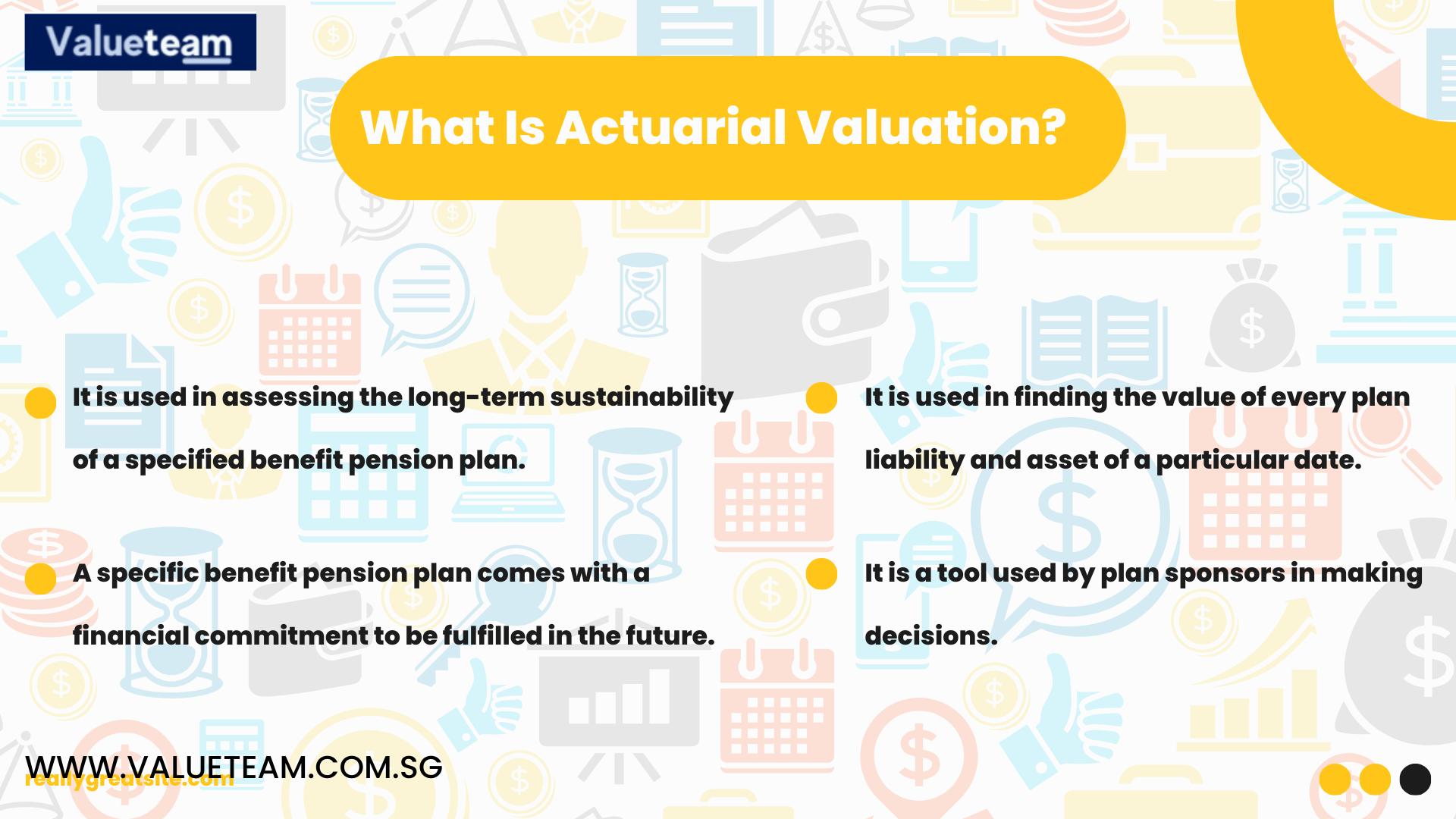Actuarial valuation:
An actuarial valuation is one of the many types of valuation used by the valuer. Other types of valuation are real estate property valuation, online business valuation, and trademark or intellectual property valuation. The actuarial valuation calculates the fair value of an individual’s pension fund’s assets versus liabilities. This actuarial valuation of pension assets and liability is done using specific metrics.
Some of them are demographic and economic assumptions, investments for the model to find the pension plan of the funded status. The assumptions used are based on experienced judgment and a critical mixture of statistical studies. Occasionally, there are deviations from forecasts as these assumptions are always derived from unusual short-term conditions, long-term data, and trends that are not anticipated.
Many variables go into an actuarial valuation model. The actuary on the asset side must assume the growth rate investment for both the bond and stock portfolio, known as the level 1 and level 2 type assets. The actuary must also consider other assets, called the illiquid level 3 type. Also, the actuary must assume the employer’s contribution rates. The payment liabilities calculation is more complex and a bit misleading.
Knowing whether an actuarial valuation is necessary after determining that your organization is obligated to maintain a statutory benefit plan is essential. If your company employs more than ten people, an actuarial assessment of your gratuity plan is likely to be required in your year-end financial statements.
A separate actuarial business valuation method is still required even if the plan is sponsored or administered by an insurance company. Regarding vacation arrangements, it’s a bit complicated. As mentioned in the preceding paragraph, several kinds of benefit plans don’t need an actuarial valuation.
The actuarial valuation of some employee benefit plans, such as gratuity, is required under accounting standards. For companies, there are two types: small and medium-sized businesses, or “SMEs,” and non-SMEs (small and medium enterprises). Getting professional business valuation providers for your business is not difficult as you can use the Google platform and search for “best business valuation near me.” You.” You will get all kinds of results.
Inaccurate actuarial assumptions lead to erroneous liability estimations. Because of this, you must be completely aware of the professional business valuation accounting rules that apply to your business.
The Board of directors is responsible for all actuarial assumptions in most accounting standards. To arrive at the discount rate, the most critical speculation, the yields on central government bonds, are considered. Assumptions for specific schemes include death rates, leave availability, disability, and more.
Getting an actuarial report from a professional actuary or business valuation provider is just the beginning of the actuarial valuation process. You need to be able to interpret, verify, and test the findings. The auditors themselves must evaluate the actuarial report.
An actuarial report’s exhibit on “reconciliation of Defined Benefit Obligation” is the most significant section. Most accounting standards demand this disclosure, which analyzes the DBO’s movement. It is explained in this article how to interpret this disclosure in the report.
Constructing yield curves from trade data is the first step in determining the discount rate. The yields-to-maturity of traded Government Securities are used to calculate this. For each bond, the YTM (Yield to maturity) will be variable, and hence the yield will be varied for each term.
Finally, they must be interpolated and extrapolated so the whole yield curve may be created. The yield curve discount rate will be determined by the asset or liability’s projected life expectancy.
As a result of the availability of economic data relating to bond trading, various suppliers create and publish yield curves. After doing their due diligence, companies may utilize the yield curves from these sources.
To be sure that the approach employed by the external supplier is acceptable for the job, companies, their auditors, and actuaries must thoroughly review it using the best professional business valuation method. Remember that not all yield curves can be used for actuarial valuations.
Actuarial valuations have many uses. It is used for assessing the funded status of a specified and detailed benefit pension fund. Actuarial values are based on assumptions, and statistical inference put into a model.
The models of actuarial depend on long-term projections. These long-term projections are inflation, interest rates, and demographic changes. There are many benefits of actuarial valuation, such as being a tool that sponsors use to make decisions. It can also be used to find the value of a specific period’s liabilities and assets.






